本文
Nishimikawa Placer Gold Mine : Sado City, Niigata Pref. Japan
- Home
- Gold and Silver in Sado
- Nishimikawa Placer Gold Mine
- Tsurushi Silver Mine
- Aikawa Gold and Silver Mine : Edo period
- Aikawa Gold and Silver Mine : From Meiji era onward
The history of production of gold and silver in Sado goes back to the ancient times. In the Konjaku-monogatari-shu ( Tales of Times Now and Past ) complied in the 12th century, it is clear that gold panning was taking place at Nishimikawa Placer Gold Mine. At Nishimikawa Placer Gold Mine, long waterways coming from upstream were erected, and levees were made so that a large amount of water could be stored. After dirt containing gold had run off into the waterways, miners would flush out all of the water at once in a process known as "Onagashi" to wash down any excess dirt. Remains of the mines and waterways still survive scattered over a wide area.
Cultural landscape features related to current livelihood
After closure of mining in 1872, people in Sasagawa Village were forced to live poorly since they had been making living by getting gold dust and had few agricultural fields.
They did tenant farming in other villages or charcoal making for their living. They learned charcoal making skill and purchased timbers from neighbor villages. They made them and brought them along to downtown to sell. Remains of cabins for charcoal making are seen around the village nowadays. In such situation, they saved money and bought agricultural fields around the village. They also increased their fields by reclaiming former mining sites and converting mining waterways into agricultural use. As a result, Sasagawa turned into an agricultural village by the end of Meiji Era. People have continued cultivating even after World War 2 and now each household owns 1 hectare paddy field in average.

The farming village of Sasagawa, a former gold mining community (National Important cultural landscape)
Sites of placer mining
Mining sites of late 16th - 18th century are located mainly around Sasagawa Village and the Nishimikawa River. Mountainsides were dug away widely with new digging technology introduced in 1593. A vestige of digging remains even now on the mountainside of Mt. Toramaruyama, the largest mining site. It remains the same as a picture map drawn in Edo period.
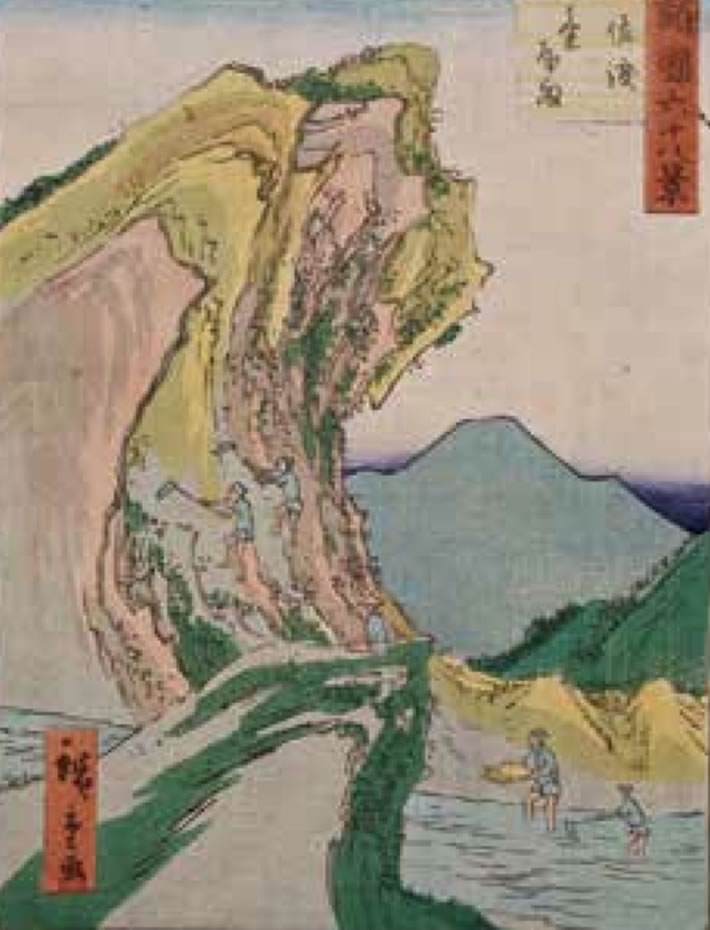
Shokoku-rokujuhakkei Sado-kinyama,Hiroshige the Second,Ukiyo-e print depicting the scene of panning gold, Property of Nagaoka City Central Library
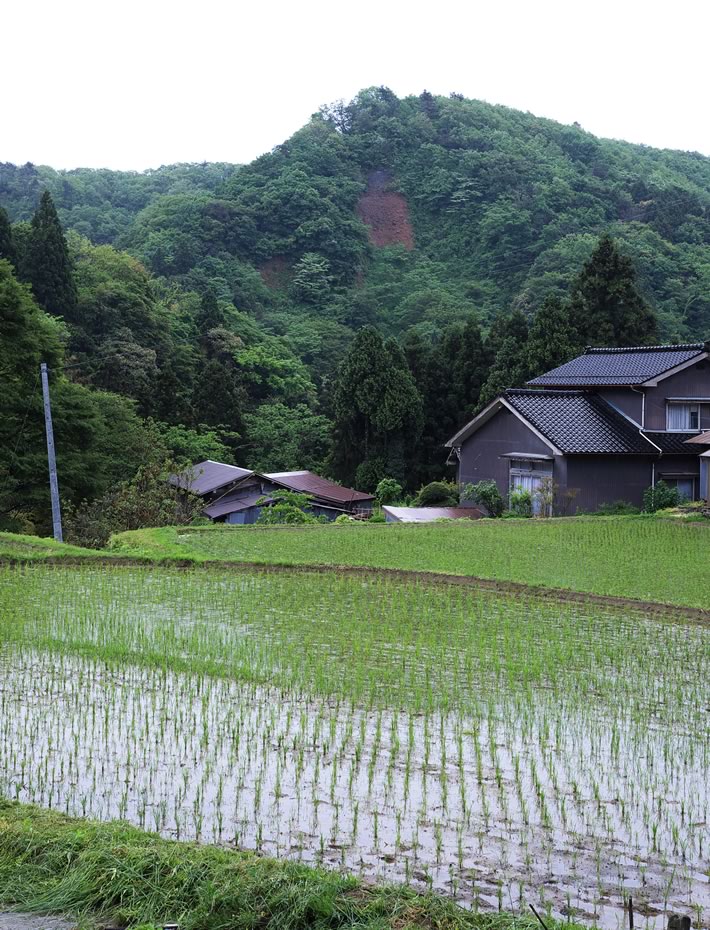
Mt.Toramaruyama(placer mining site) (C) Hoichi Nishiyama
Remains of waterways
Lots of waterways were constructed in order to wash down unwanted sand gravel out of earth and sand containing gold dust with water technology introduced by Yamashi, or mining tunnel owners in Tsurushi and Aikawa Mine around 17th century. The 12km long one, supposed to be constructed by Mikata Tajima, a powerful Yamashi, is called "Kinzan-e"(gold mine waterway)
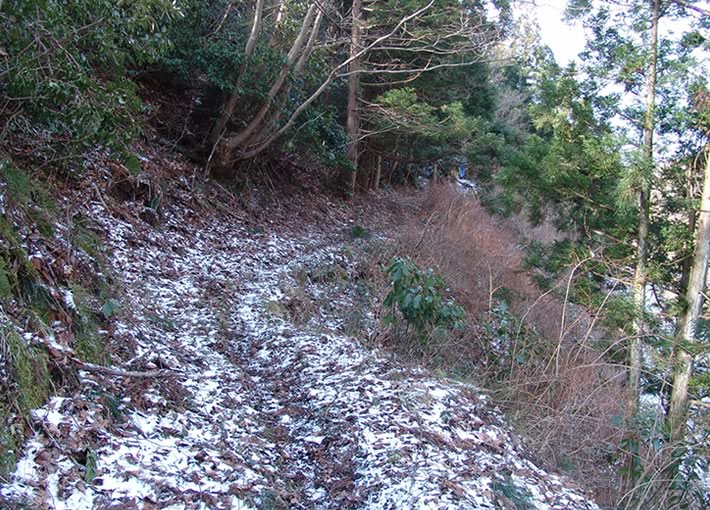
Waterways
Pond and dike
Ponds and dikes were used to impound water for washing down unwanted sand gravel. It is said they washed down them until around 25th of every month and collected gold dust until end of the month. Development of water technology like this increased production drastically in Edo period.
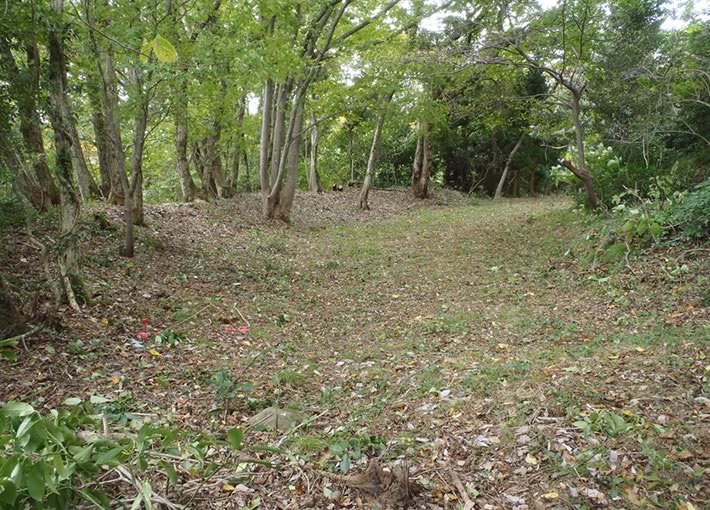
Mt.Goshayayama (pond and dike)
Remains of stone masonry
There are 49 structures of piled up stones in Sasagawa Village. They are considered to be used in various ways such as smithy shops for repairing mining tools, sheds, and rest houses for workers since an old picture map described one as a smithy shop.
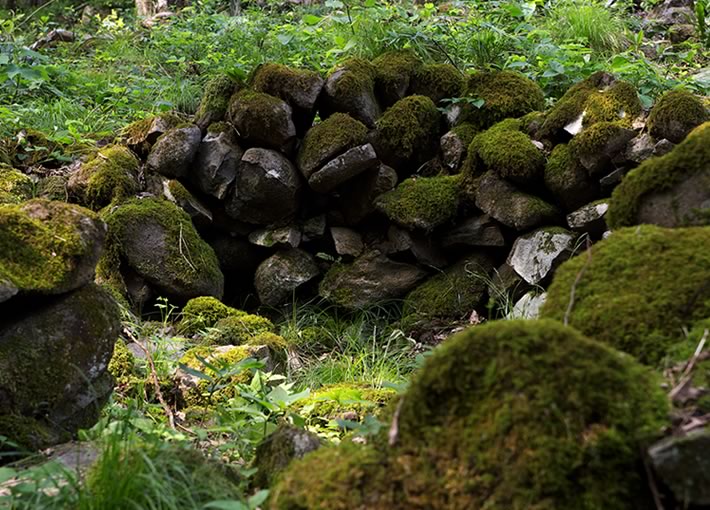
Mt.Goshayayama(remains of stone masonry) © Hoichi Nishiyama
Remains of official's residence
When Okubo Nagayasu, the first Sado Magistrate, had started ruling mines in Sado in 1603, Nishimikawa was placed under control of his deputy official, Hara Tosa. Two officials from Sado Magistrate Office had been ruled Nishimikawa since then. There are a terrace and stonewall supposed to be a site of official's residence.
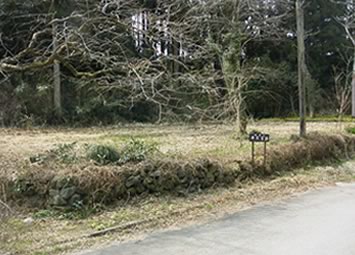
Remains of official's residence
Oyamazumi-jinjya Shrine
Oyamazumi-jinja Shrine is said to be built in 1594 wishing for safety and prosperity of the placer gold mine. Several technical workers moved to Ezo, Hokkaido from Sasagawa to impart their mining skill in mid-19th century. There are pieces of stonework donated from Hokkaido to praise their achievement in the shrine site.
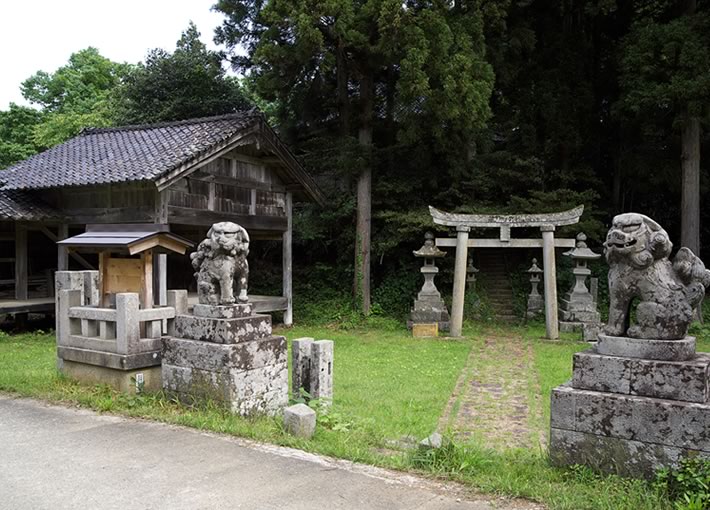
Oyamazumi-jinjya Shrine(center), Noh stage(left) © Hoichi Nishiyama
Kaneko Kanzaburo House
The Kaneko family served as a village head for generations during Edo period. Its facilities such as a shed, a toilet as well as a main house built during 1781-1788 are well preserved. It also stores documents and picture maps of the mine.

Kaneko.Kanzaburo House © Hoichi Nishiyama



